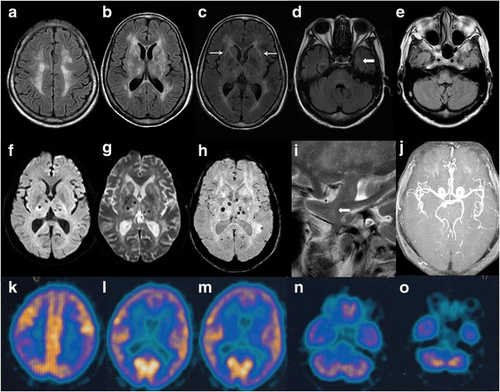Fatal Familial Insomnia
What is a Fatal Familial Insomnia?
It is a rare genetic sleep disorder affecting the thalamus. The human brain is a powerful organ responsible for various bodily activities including emotions and sleep.
Why is it fatal? Fatal familial insomnia can lead to death within a year after the symptoms become noticeable. Some people can last for two years. It varies from one person to another. (1, 2)

Image 1: Fatal familial insomnia targets the thalamus part of the brain and affects the person’s sleep-wake cycle.
Picture Source: i.ytimg.com

Image 2: Fatal familial insomnia can lead to progressive deterioration and in a matter of months the patient could die.
Photo Source: www.medindia.net
What happens with fatal familial insomnia?
Fatal familial insomnia belongs to the prion group of diseases. Prior diseases mean that the brain contains a lot of misfolded prion proteins. Although rare, it can cause nerve cell degeneration in the brain. Of all diseases that belong in the prion category, the fatal familial insomnia is the rarest.
The thalamus part of the brain is the one affected. The thalamus is the one responsible for controlling the sleep-wake cycle. The thalamus is the relay center of the brain as it enables various parts of the brain to communicate well with each other. (1, 2, 3)
Symptoms
The symptoms of fatal familial insomnia usually start once a person reaches 32 years old, although there are reported cases of early symptoms in patients 18 years old. The age range is 18 to 72 years old.
- Progressive insomnia
- Weight loss
- Speech problems
- Lack of appetite
- Too low/too high body temperature
- Panic attack (5)
- Phobia
- High blood pressure
- Excessive sweating and salivation
- Hyperventilation (4)
- Erectile dysfunction
- Ataxia (uncoordinated movements)
- Delirium (severe confusion)
- Hallucinations
- Myoclonus (muscle twitching and jerking)
- Problems with walking and talking
- Dementia (3)
The presentation of symptoms is divided into four stages:
- Insomnia phase – The patient is unable to sleep soundly at night. An abnormal sleep pattern can lead to a feeling of discomfort, paranoia, panic attack, and phobia, which could last for three to four months.
- Hallucination phase – The patient tends to see, hear, and smell things which are not really there. As hallucination becomes intense, panic attack becomes imminent.
- Progressive insomnia – The patient finds it extremely difficult to sleep as the hallucination and discomfort get severe. Activities of daily living are affected and the patient can’t even eat normally which leads to rapid weight loss.
- Dementia – In this phase, the patient becomes unresponsive to stimuli. Once the patient is already in this phase, it indicates that the patient is nearing death. (4, 5, 6, 8)
What causes fatal familial insomnia?
Fatal familial insomnia is caused by a mutation in the PRNP gene and it can be passed on to the offspring. The mutation of genes affects the thalamus area of the brain.
As time passes by, the thalamus loses nerve cells leading to a variety of symptoms like the ones mentioned above. Fatal familial insomnia does not only affect the thalamus but also other areas of the brain like the inferior olives, a part of the medulla oblongata responsible for motor control.
In extremely rare cases, the PRPN gene in patients with fatal familial insomnia occurs without a family history at all. The condition is called new or de novo variant. The problem in the gene takes place during the formation of the egg or sperm. It is not an inherited type of fatal familial insomnia.
However, the parent with the de novo variant can still pass on the condition to his/her offspring. (5, 7, 8)
Epidemiology
In 1998, 25 families were reported to carry the genes for fatal familial insomnia. Those families belong to Italian, German, French, American, Japanese, Austrian, and British.

Photo 3: Neurologic images of a person with fatal familial insomnia.
Image Source: upload.wikimedia.org

Image 4: A sleep study is one of the tests used by doctors to detect the presence of fatal familial insomnia.
Picture Source: nosleeplessnights-o9omstpxiddhnwzt.stackpathdns.com
Diagnosis
There are some procedures the doctor will ask you to do to confirm the diagnosis of fatal familial insomnia.
- Sleep study – The doctor will ask you to note your sleeping habit. If possible, the doctor will conduct a sleep study wherein the doctor records the activity of the brain and heart while you are asleep.
- PET scan – It is done to check the functioning of the thalamus.
- Genetic testing – This test is only performed if you have a family history of fatal familial insomnia. The Genetic Testing Registry is the one that provides information about genetic testing for fatal familial insomnia. (8, 9, 10)
Treatment and Cure
Unfortunately, there is no cure for fatal familial insomnia. As a matter of fact, there are no remedies that can slow down the progression of the disease. What the medical team can do is to offer supportive management. They treat the symptoms as they appear so as to keep the patient comfortable.
For insomnia, a sleep medication is prescribed to induce sleep. Various research studies are currently made to find cure and prevention for fatal familial insomnia. An animal study suggests that immunotherapy can help but is to be tested in human first. The use of antibiotic like doxycycline is also currently investigated as some researchers suggest that it can help in the prevention of fatal familial insomnia. (2, 5, 8, 10)
Talk to a healthcare professional
If fatal familial insomnia runs in your family or you are suspecting that you have one, then the best thing to do is to consult a doctor who has a vast experience in dealing with fatal familial insomnia and other conditions that belong to the prion category. Only a few doctors handle cases that have something to do with the prion disease category.
If you can’t find one, then try contacting national specialist as they might recommend someone for you. (1, 4, 5)
What is the prognosis?
Until a treatment becomes available, the prognosis remains poor. The patient could eventually die within 12 months to 18 months after the symptoms appear. Research and studies are still ongoing to find cure and remedy for fatal familial insomnia.
Hopefully, the current research and studies could lead to the formulation of treatment and prevention of fatal familial insomnia. (5, 7)
References:
- https://en.wikipedia.org/wiki/Fatal_insomnia
- https://rarediseases.info.nih.gov/diseases/6429/fatal-familial-insomnia
- https://www.msdmanuals.com/en-kr/home/brain,-spinal-cord,-and-nerve-disorders/prion-diseases/fatal-insomnia
- https://www.healthline.com/health/fatal-familial-insomnia
- https://medium.com/@arifakhtar/dying-to-sleep-the-waking-nightmare-of-fatal-familial-insomnia-874126b43c3a
- https://www.orpha.net/consor/cgi-bin/OC_Exp.php?lng=en&Expert=466
- https://www.nejm.org/doi/full/10.1056/NEJM199202133260704
- http://www.world-of-lucid-dreaming.com/fatal-familial-insomnia.html
- https://www.sciencedirect.com/topics/neuroscience/fatal-familial-insomnia
- https://gizmodo.com/fatal-familial-insomnia-the-brain-disease-that-stops-y-1695446513